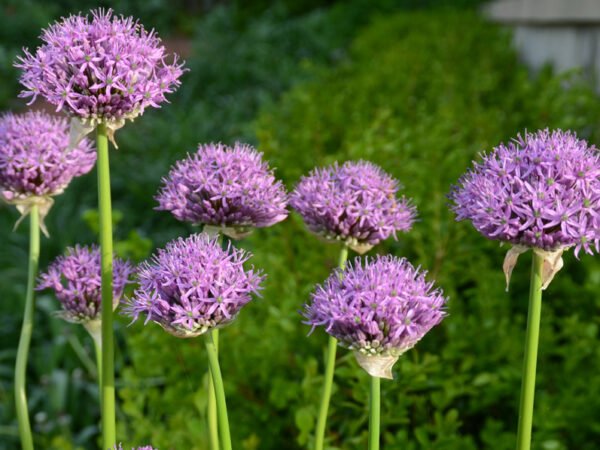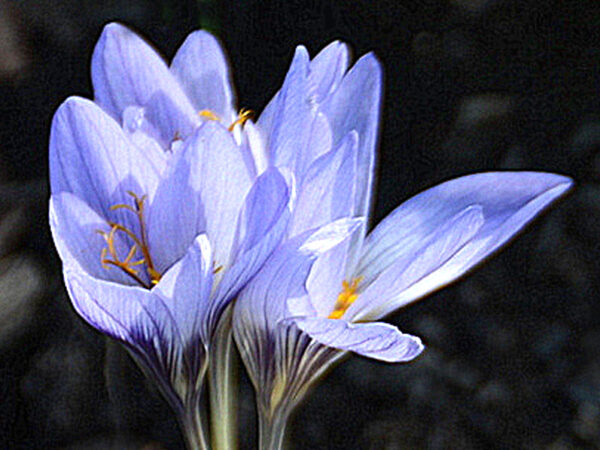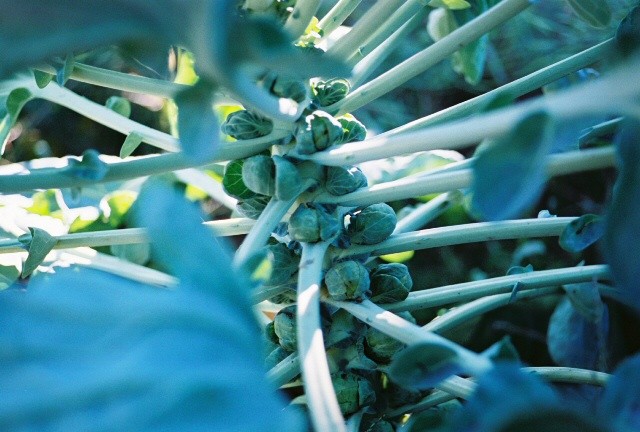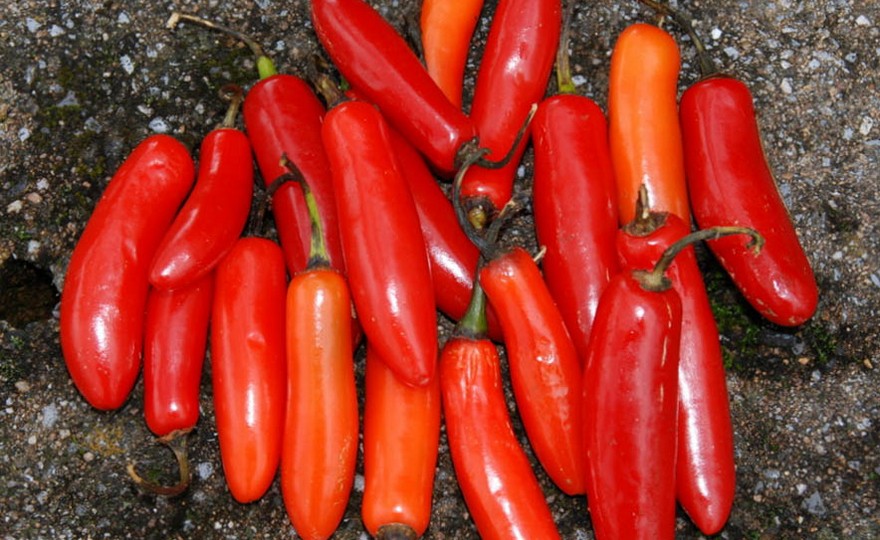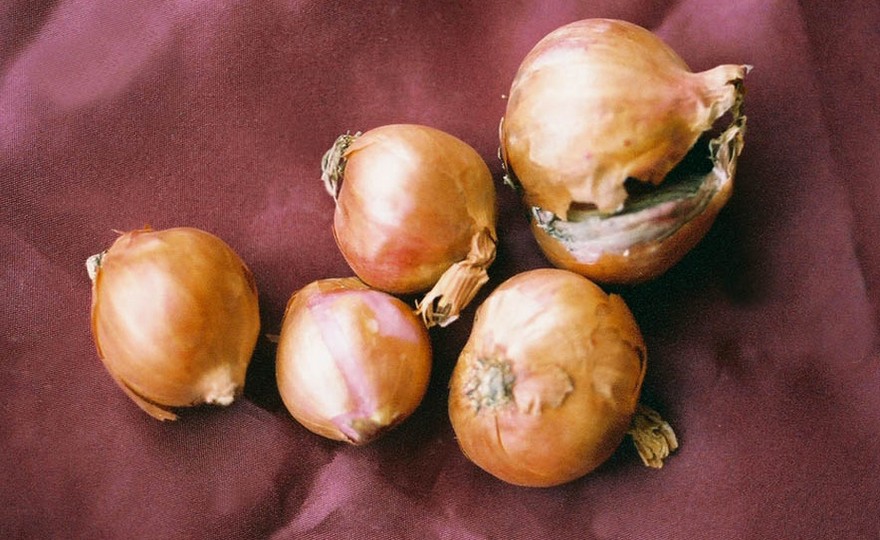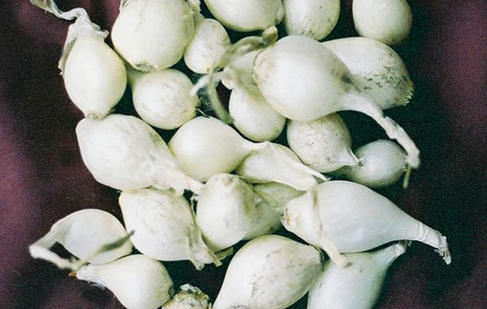Circa 1902. 3” dense lilac-purple spheres. HZ: 5-9 24-30” May-June
Allium Siculum Bulgaricum
Blossoms form bell-shaped flowers and grow to 36″. These spectacular beauties are not only breathtaking but they are deer resistant.
| Type | Spacing | Planting Depth | HZ | Height | Bloom Time |
| Allium | 4 in. | 4 in. | 6-10 | 32-36″ | Early to Mid-Season |
Crocus, Saffron
First described in the mid-1600s, this is the crocus from which saffron, the world’s most expensive herb, is harvested. Pinkish-lavender blooms are larger than the wild saffron crocus.
| Type | Spacing | Planting Depth | HZ | ||
| Colchicum | 4 in. | 4 in. | 4-10 |
Southport White Globe
FULL SUN – ONION, Southport White Globe – Allium cepa, probably native to western and central Asia, onions have been cultivated since before recorded history. The European explorers brought the onion to the Americas in the 15th century where they quickly became a staple in the diet of the Indigenous Peoples. Introduced in the late 1800s, Southport White Globe is a medium (2-3 in.) vegetable with silvery white skin and white, firm flesh. Mild flavor. Good storage. Onions require a very long growing season. They can be sown in the early spring for a fall crop. In the spring, plant as soon as the ground can be worked. They can also be sown in late summer and harvested the following spring and summer. Soil should be deeply spaded before planting. Rows should be 12-18 in. apart. When seedlings are 2 in. high, thin, leaving 4-6 in. between plants.
| Type | Spacing | Planting Depth | Days to Germination | Maturity |
| Globe Onion | 4-6 in. | 1 in. | 14-21 | 120 |
Red Burgundy
FULL SUN – ONION, Red Burgundy – Allium cepa, probably native to western and central Asia, onions have been cultivated since before recorded history. The European explorers brought the onion to the Americas in the 15th century where they quickly became a staple in the diet of the Indigenous Peoples. Introduced in the late 1800s, Red Burgundy is a large (3+ in.) vegetable with glossy burgundy skin and pinkish white, firm flesh. Pungent flavor. Poor storage. Onions require a very long growing season. They can be sown in the early spring for a fall crop. In the spring, plant as soon as the ground can be worked. They can also be sown in late summer and harvested the following spring and summer. Soil should be deeply spaded before planting. Rows should be 12-18 in. apart. When seedlings are 2 in. high, thin, leaving 4-6 in. between plants.
| Type | Spacing | Planting Depth | Days to Germination | Maturity |
| Globe Onion | 4-6 in. | 1 in. | 14-21 | 120 |
Brussel Sprouts, Long Island Improved
FULL SUN – BRUSSEL SPROUTS, Long Island Improved – Brassica oleracea var. gemmifera, first domesticated in the 1300s near Brussels, Belgium from a kale-like form of wild cabbage, the Brussels Sprout began to grow slowly in popularity in the US in the early 1800s. Long Island Improved was introduced in the 1890s. It is a semi-dwarf plant reaching a height of 24 in. and producing 1-2 in. very flavorful sprouts.
Brussel Sprouts can be sown in the early spring as soon as the ground can be worked or started indoors. Mild frosts do not impact Brussel Sprouts. If direct seeding, soil should be deeply spaded before planting. Rows should be 30 in. apart.
When seedlings are 2 in. high, thin, leaving 18 in. between plants.
Adding lime to the soil before planting will sweeten Brussel Sprouts. Leaves should be continuously removed from the lower parts of the plants to enhance sprout development. In the fall, exposure to mild frosts tends to sweeten the sprouts.
| Type | Spacing | Planting Depth | Days to Germination | Maturity |
| Brussel sprouts | 18 in. | 1 in. | 10-14 | 115 |
Hot Pepper, Serrano
FULL SUN – HOT PEPPER, Serrano – Capsicum annuum, native to the Americas, specifically Central America, hot peppers have been cultivated for thousands of years. They were an extremely important food and economic crop and were even used as a currency for centuries. Old heirloom looks like a small jalapeno. Peppers are hotter with interesting citrus flavor that blends well with lime, cilantro, garlic and mint. 30 in. plants are very prolific. Sow indoors 6 weeks before transplanting outside. Plant seed ½ in. deep. Transplant outside after danger of frost is over. Add ¼ cup bone meal to the soil when planting. Space plants 30 in. apart in rows 36 in. apart.
| Type | Spacing | Planting Depth | Days to Germination | Maturity |
| Hot | 30 in. | 1/2 in. | 14-21 | 80 |
Shallot Sets – 8 per bag
FULL SUN Probably native to western or central Asia, shallots have been cultivated throughout recorded history. They were brought to America with the earliest colonists.
Shallots may be planted in the fall or the spring similar to garlic. Fall plantings will mature earlier. Shallot plants are hardy and can withstand temperatures as low as 20 degrees fahrenheit so spring plantings may be made as soon as the soil can be worked.
Turn the soil and add some lime before planting. Plant the sets, root end down, two inches deep, making certain that the growing point is exposed above the surface of the ground. Leave 3 inches between bulbs in rows 18-24 inches apart. Apply a nitrogen and phosphorus rich fertilizer (10-20-10) and water like any garden green.
Shallots will be ready to harvest in approximately 100 days when the leaf tops have fallen over and dried and the shallots have emerged from the soil. Cure shallots by placing them in a warm, well-ventilated area until the necks are thoroughly dry.
Curing must take place for the shallots to be stored for any length of time. With warm temperatures, good air circulation and low humidity, curing should be completed within two weeks after harvest. Store in a refrigerator for longest lasting results.
| Type | Spacing | Planting Depth | Days to Germination | Maturity | |
| Shallots | 6 in. | 2-3 in. | 10-14+ | 100 Days |
Onion Sets – White – 60 per bag
White onions are the “Middle-of-the-Roaders” in the onion family. They are not as sweet as the reds, but they store for much longer than the reds. White onions are excellent for cooking and for pickling, and in their own way, they have their own special beauty.
Remember, if you want to maximize the sweetness of your onions, add lime to your soil before you plant the sets.
| Type | Spacing | Planting Depth | HZ | Height | Maturation |
| Onion Set | 6 in. | 1-3 in. | 3-10 | 12-24″ | 100 Days |
Onion Sets – Yellow – 60 per bag
Yellow Onions are the “Workhorses” of the onion family. They are rarely as sweet as the reds or whites, but they are sweet and they store for a long, long time. Often, they can last six months (sometimes longer) if stored in a cool, dry area with some air circulation.
Yellows are great for cooking, used fresh or for pickling, and they are the most vigorous of the onion varieties.
| Type | Spacing | Planting Depth | HZ | Height | Maturation |
| Onion Set | 6 in. | 1-3 in. | 3-10 | 12-24″ | 100 Days |

